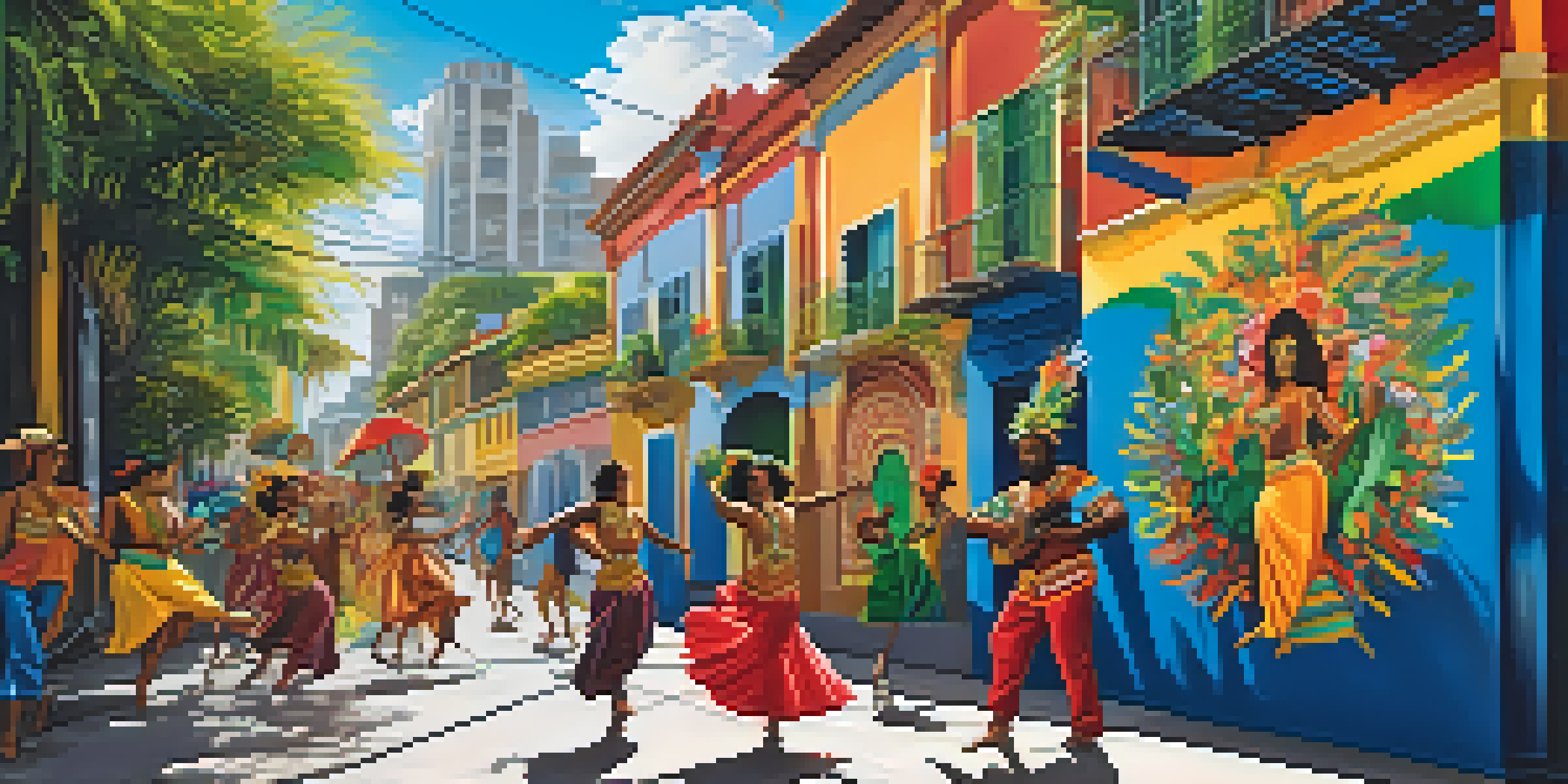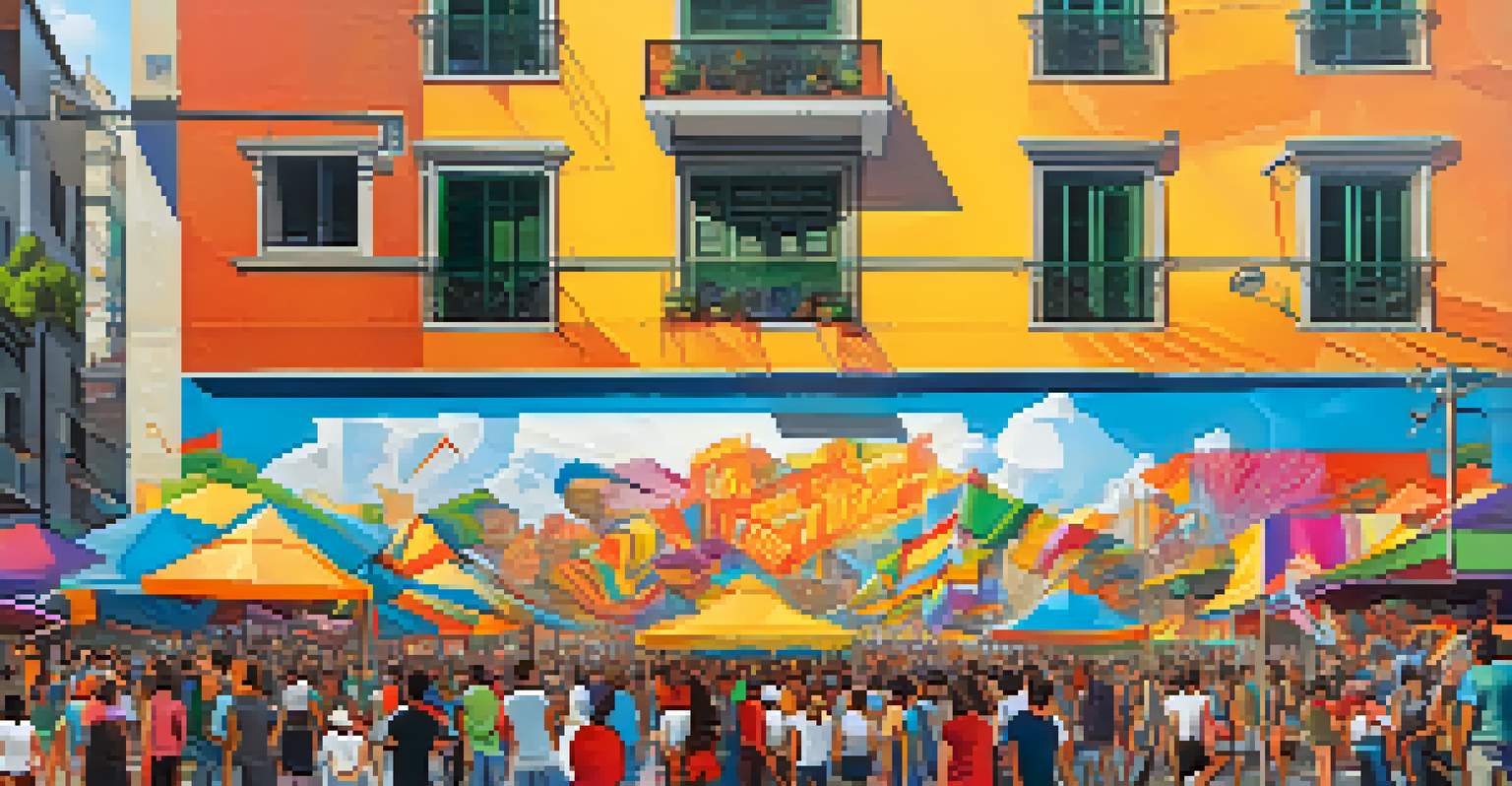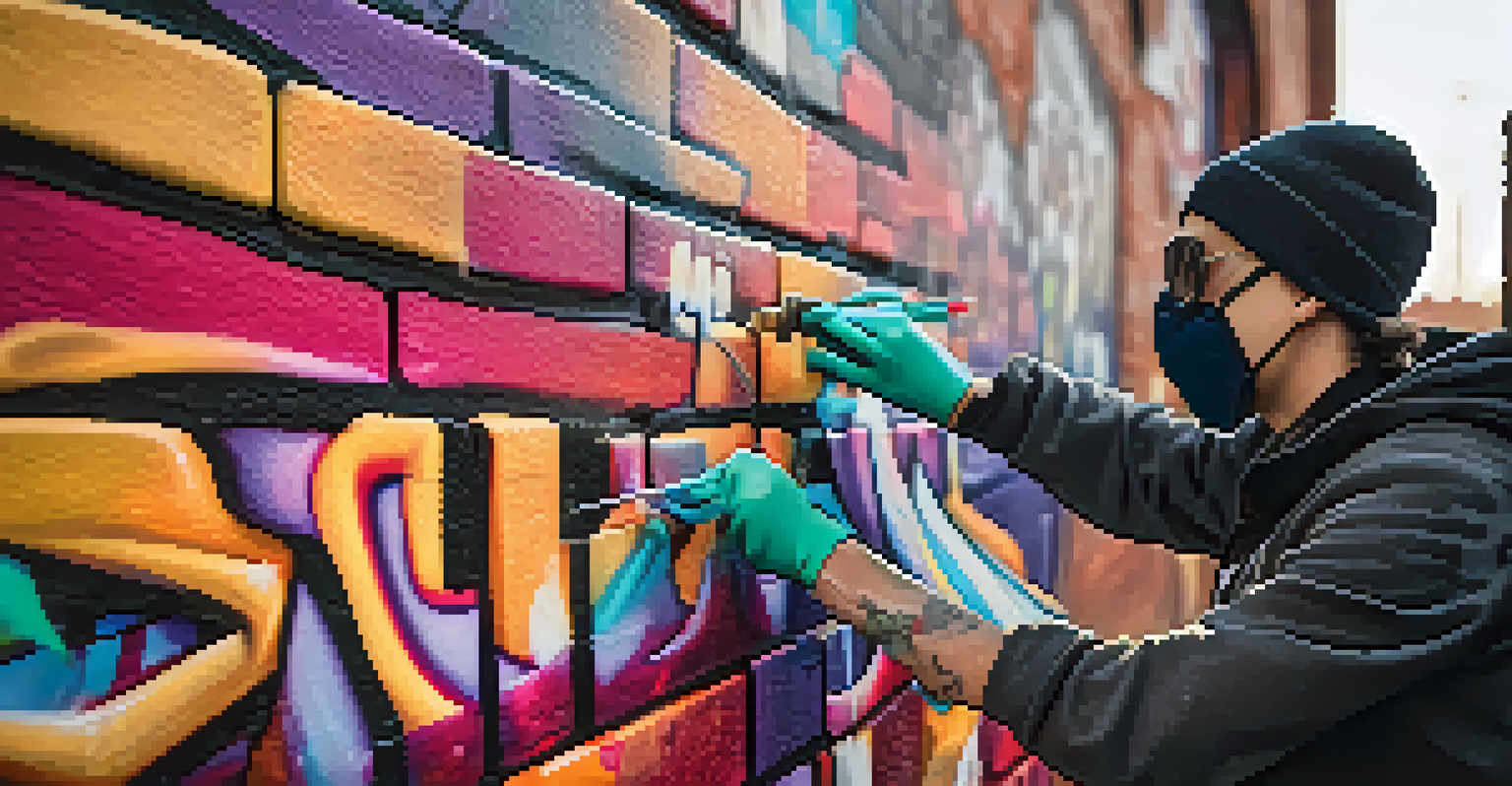Graffiti vs. Street Art: Understanding Brazil's Artistic Divide

Defining Graffiti and Street Art: A Clear Distinction
At first glance, graffiti and street art may seem interchangeable, but they represent distinct forms of expression. Graffiti is often characterized by stylized lettering and tags, usually done quickly and often anonymously. In contrast, street art encompasses a wider range of artistic expressions, from murals to installations, where the artist’s identity may be known or celebrated.
Art is not freedom, it is a responsibility.
This distinction is essential in understanding Brazil's vibrant urban art scene. While graffiti often conveys a sense of rebellion and urgency, street art can serve as a platform for social commentary, beautification, and community engagement. Both forms, however, challenge traditional concepts of art and ownership in public spaces.
In Brazil, these two forms coexist, each carving out a unique space in the cultural landscape. As we delve deeper, we’ll explore how their differences shape not only the art itself but also the communities that embrace them.
Historical Roots: How Brazil's Urban Art Evolved
Brazil's relationship with graffiti dates back to the 1980s, when artists began to express discontent with political regimes through spray paint. This period marked the rise of graffiti as a voice for the marginalized, reflecting the struggles and aspirations of everyday people. As urbanization increased, so did the presence of graffiti in cities like São Paulo and Rio de Janeiro.

Street art, on the other hand, gained momentum in the 2000s, with artists like Os Gêmeos and Eduardo Kobra bringing vibrant visuals and storytelling to the streets. These artists transformed public spaces into canvases, using their work to engage the community and attract tourists. Their colorful murals often depict Brazilian culture, history, and social issues, inviting viewers to reflect on their surroundings.
Graffiti vs. Street Art Defined
Graffiti is typically quick, stylized tagging, while street art encompasses a broader range of artistic expressions and often invites community engagement.
This evolution highlights how both forms of art have adapted to the socio-political landscape of Brazil. As we look closer at their impact, we can appreciate how these art forms not only beautify urban environments but also provoke thought and dialogue.
Cultural Significance: More than Just Art
In Brazil, graffiti and street art transcend mere aesthetics; they encapsulate the spirit and struggles of the people. Many artists use their work to comment on social issues such as inequality, violence, and environmental concerns, making their art a powerful tool for advocacy. This cultural significance resonates deeply with local communities, who often see their stories reflected in the art around them.
Street art is a reflection of the society in which we live. It is a commentary on our current state of affairs, and it should be celebrated as such.
Moreover, the act of creating graffiti or street art itself can be seen as a form of empowerment. For many artists, it’s an opportunity to reclaim public spaces and assert their identity. This connection between art and activism is particularly evident in marginalized neighborhoods, where art helps to foster community pride and resilience.
As we explore further, we’ll see how these art forms not only serve as a reflection of societal issues but also pave the way for change and dialogue in Brazilian society.
The Role of Authorities: Regulation vs. Freedom
The relationship between street artists and authorities in Brazil is complex and often contentious. While some cities have embraced street art as a form of cultural expression, others have imposed strict regulations against graffiti, viewing it solely as vandalism. This tension creates a dynamic where artists must navigate the fine line between artistic freedom and legal constraints.
In some cases, local governments have initiated programs to support street art, commissioning artists to create murals that beautify neighborhoods and promote tourism. These initiatives demonstrate a recognition of the positive impact of urban art on community identity and economic development. However, this acceptance often comes with a caveat: the work must align with the city’s vision, stifling some artists’ creative freedom.
Cultural Impact of Urban Art
Brazil's graffiti and street art reflect societal struggles and serve as powerful tools for advocacy and empowerment within communities.
This ongoing tug-of-war between artists and authorities illustrates the evolving nature of urban art in Brazil. As we continue, we’ll examine how this relationship shapes the future of graffiti and street art in the country.
International Influence: Brazil's Art on the Global Stage
Brazilian graffiti and street art have made significant waves on the international scene, influencing artists and movements around the world. The unique style and thematic depth of Brazilian urban art have garnered attention at global festivals and exhibitions, showcasing the nation’s vibrant creativity. Artists like Kobra and Os Gêmeos have become ambassadors of Brazilian culture, sharing their work beyond borders.
This global recognition has led to collaborations and exchanges that enrich the local art scene. International artists often travel to Brazil, drawn by its rich tapestry of urban art, and in turn, Brazilian artists gain exposure to new techniques and ideas. This cross-pollination not only fosters creativity but also strengthens Brazil’s position as a cultural powerhouse.
As we delve deeper into this global influence, we’ll see how it enhances the local art landscape while also presenting challenges and opportunities for Brazilian artists.
Street Art Festivals: Celebrating Urban Creativity
Street art festivals have become a cornerstone of Brazil's artistic calendar, celebrating the vibrant creativity found in urban spaces. Events like the 'Festival de Arte Urbana' in São Paulo bring together local and international artists to collaborate, share ideas, and create stunning murals. These festivals not only beautify the city but also foster community engagement, attracting art enthusiasts and tourists alike.
During these festivals, the streets transform into open-air galleries, showcasing a diverse range of styles and messages. Artists often use this platform to experiment with new techniques, pushing the boundaries of their craft while engaging with the audience. The collaborative spirit of these events encourages dialogue and interaction, making art accessible to all.
Complex Relations with Authorities
The interaction between street artists and local authorities in Brazil varies, with some cities embracing urban art and others imposing strict regulations.
As we explore the significance of these festivals, we’ll uncover how they contribute to the evolution of graffiti and street art in Brazil while reinforcing the sense of community and cultural pride.
The Future of Graffiti and Street Art in Brazil
Looking ahead, the future of graffiti and street art in Brazil appears vibrant yet challenging. As urban environments continue to evolve, artists will likely find new ways to adapt their work, tackling emerging social issues and exploring innovative techniques. The ongoing dialogue between artists, communities, and authorities will play a crucial role in shaping the landscape of urban art.
Additionally, as technology advances, we may see the rise of digital street art and augmented reality installations, expanding the definition of public art. This evolution will challenge traditional notions of where and how art can be experienced, further blurring the lines between graffiti and street art.

Ultimately, the future of these art forms in Brazil will depend on a balance between creative expression and community acceptance. As we wrap up, we’ll reflect on how this artistic divide continues to evolve and influence Brazilian culture.